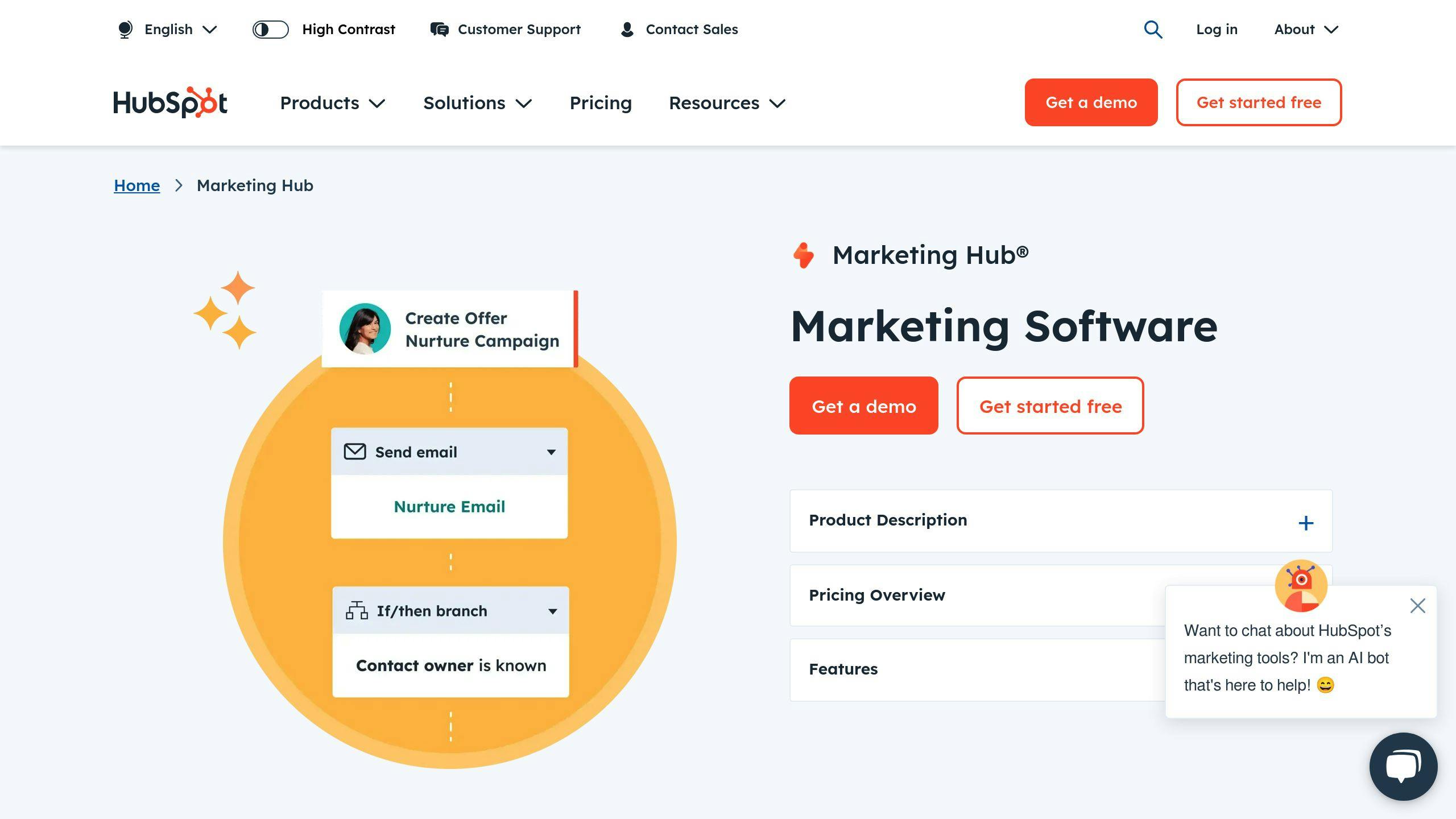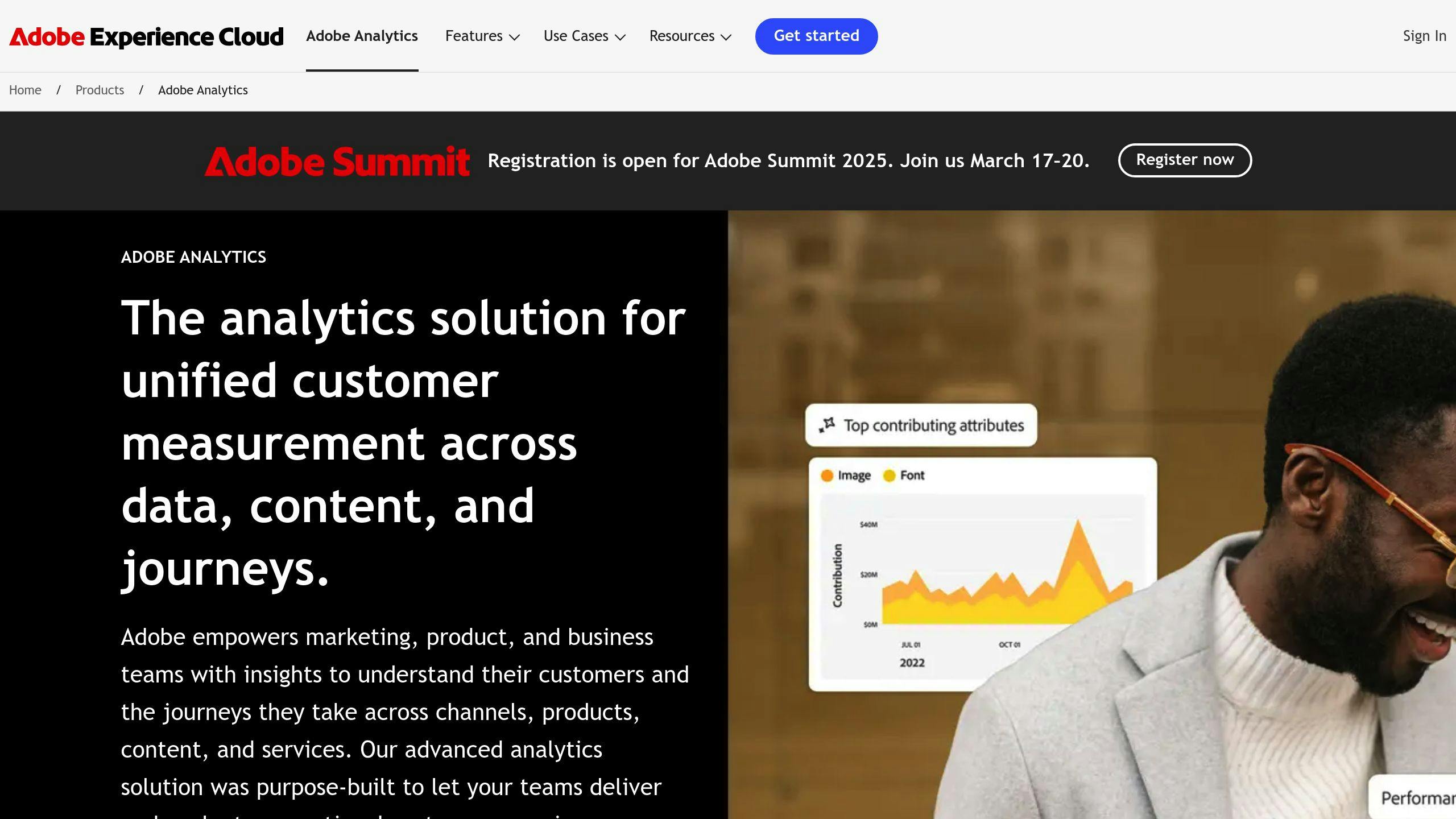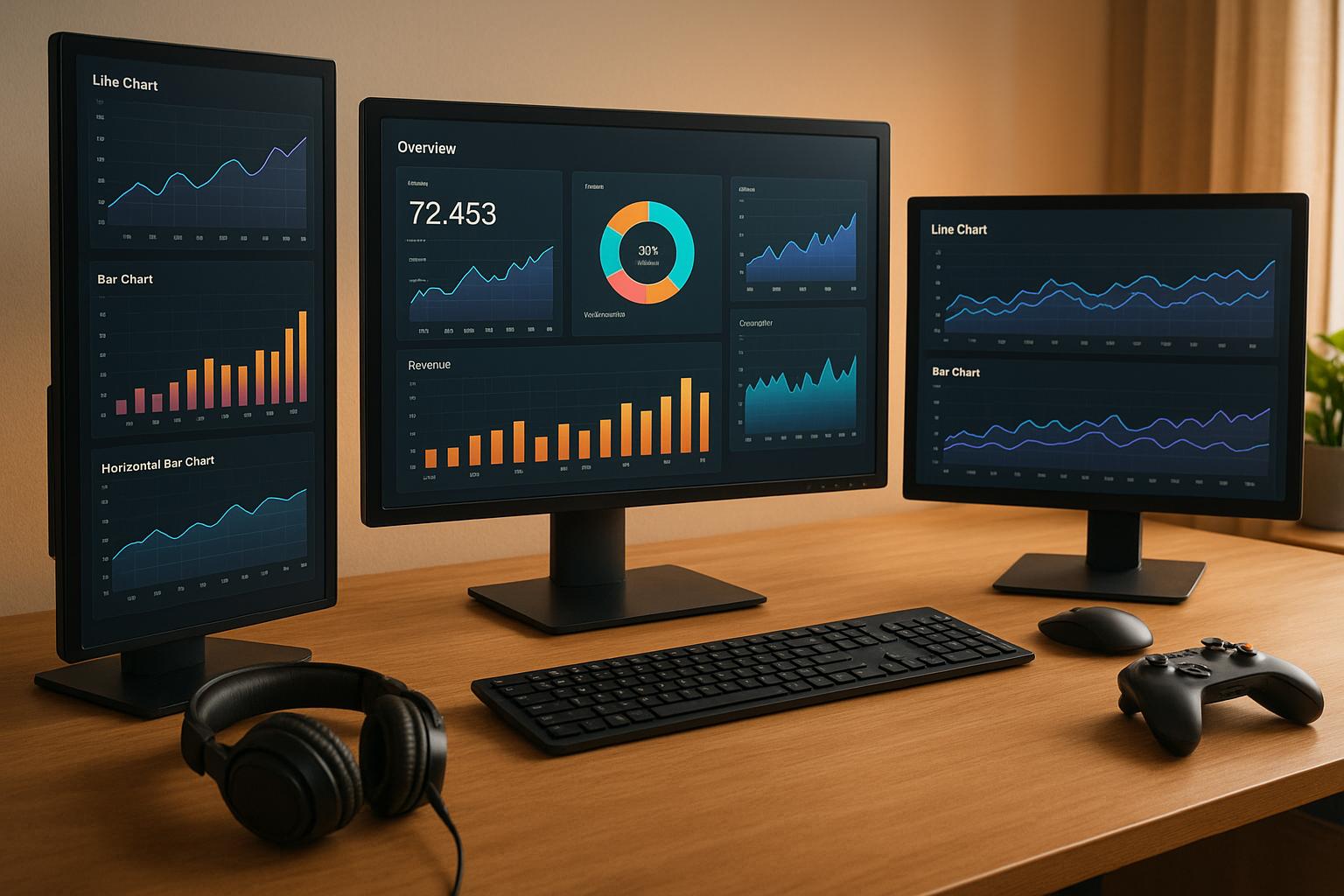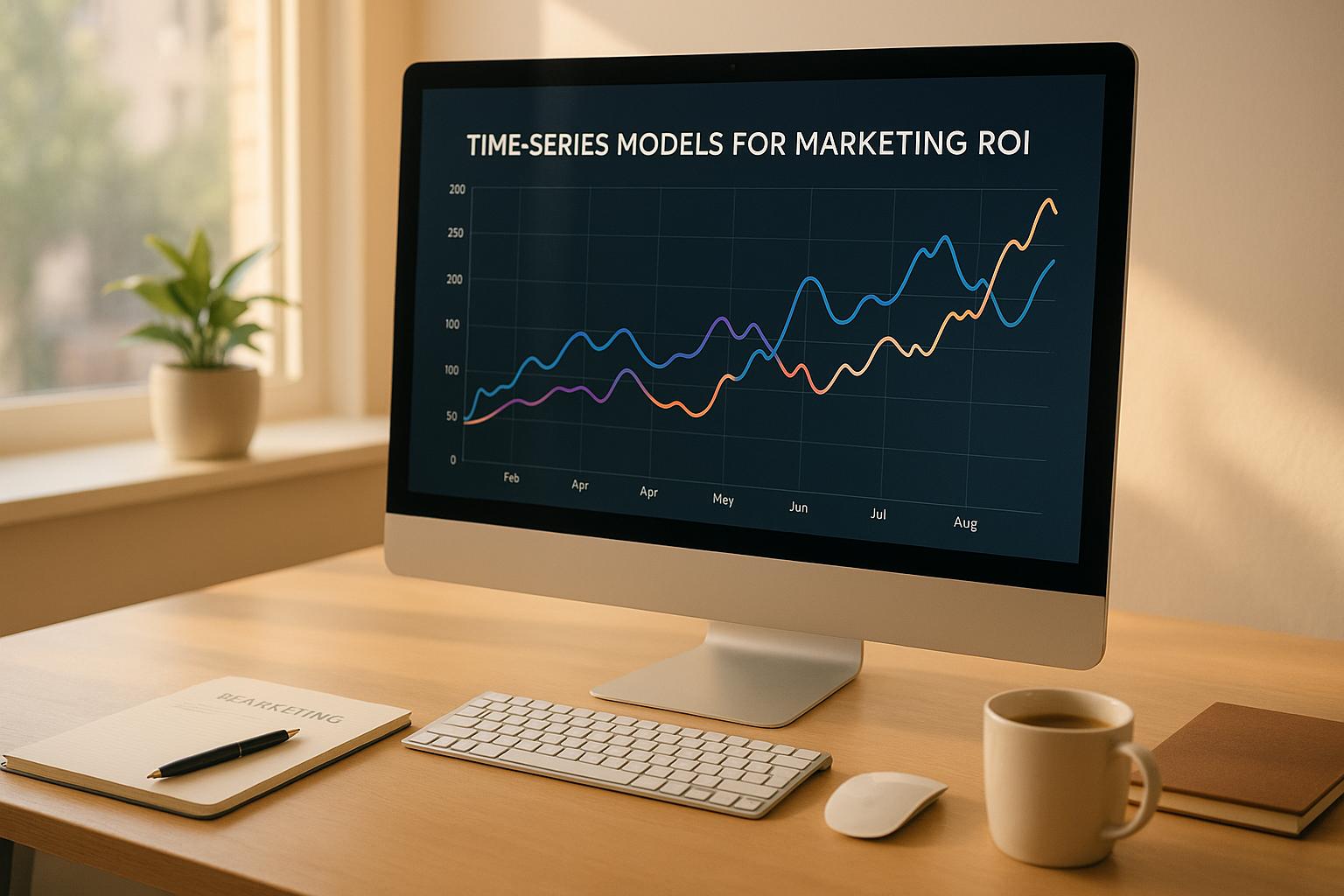Looking for the best way to track your marketing campaigns effectively? Campaign tracking tools help you measure performance, allocate budgets wisely, and improve ROI. This guide covers the key features you need and compares top tools like Google Analytics, HubSpot, and Adobe Analytics.
Key Features of Campaign Tracking Tools:
- Real-Time Monitoring: See campaign performance instantly to fix issues quickly.
- Multi-Channel Integration: Track performance across social media, email, SEO, and paid ads.
- User-Friendly Dashboards: Simplify data with clear, customizable visuals.
- Detailed Reporting: Understand ROI with advanced analytics and cross-channel attribution.
Quick Comparison of Tools:
| Feature | Google Analytics | HubSpot | Adobe Analytics |
|---|---|---|---|
| Pricing | Free (GA4) / $150,000/year | $800/month+ | Contact for pricing |
| Real-Time Tracking | Basic in free; advanced in 360 | Comprehensive | Advanced for enterprises |
| Multi-Channel Support | Web, mobile, social | Email, social, CRM, web | Web, mobile, offline |
| Ease of Use | Moderate learning curve | Intuitive | Requires technical expertise |
Key Takeaway: Small businesses often start with Google Analytics (free). HubSpot is great for growing teams, while Adobe Analytics suits enterprises needing advanced insights.
Start optimizing your campaigns today by choosing the right tool for your business needs.
Key Features to Look for in Campaign Tracking Tools
Real-Time Campaign Monitoring
The ability to monitor campaigns in real time gives marketers instant visibility into performance. Tools such as Google Analytics allow you to track website traffic, conversion rates, and user behavior as it happens. This quick access to data helps marketers tweak underperforming ads and make better use of their budgets. Additionally, tools should work smoothly across multiple platforms for seamless data collection.
Integration with Multiple Channels
Today’s campaigns run across different platforms, so integrating data from all these sources is essential. A good tracking tool should connect effortlessly with various channels, such as:
| Channel Type | Key Metrics | Integration Benefits |
|---|---|---|
| Social Media | Engagement, reach, clicks | Monitor social campaign success |
| Email Marketing | Open rates, click-through rates | Understand subscriber behavior |
| SEO | Organic traffic, rankings | Tie search performance to campaigns |
| Paid Advertising | Cost per click, conversions | Maximize ad spend efficiency |
Once connected, the tool should provide a unified view of performance through a user-friendly dashboard.
Simple and Clear Dashboards
Dashboards are essential for turning raw data into actionable insights. A well-designed interface should make it easy to review metrics and adjust strategies quickly. Look for dashboards offering customizable views, real-time updates, and visual tools like graphs to simplify complex data.
Detailed Reporting and Analytics
Detailed reports are key to understanding campaign outcomes and showing ROI to stakeholders. Features like cross-channel attribution, advanced segmentation, and automated data collection streamline the reporting process.
AI-powered platforms like Adobe Analytics can identify patterns and trends, helping marketers make smarter, data-driven decisions about budget allocation and campaign improvements.
How to track your digital campaign using analytics tools
Examples of Popular Campaign Tracking Tools
Let’s look at how Google Analytics, HubSpot, and Adobe Analytics stack up when it comes to some of the most sought-after campaign tracking features.
Features of Google Analytics

Google Analytics is a go-to tool for many marketers because it's free and packed with features. It excels at real-time tracking, focusing on website traffic and conversions. Plus, its integration with other Google tools makes it easy to get a complete view of your campaigns.
| Feature Category | Key Capabilities |
|---|---|
| Real-time Tracking | Tracks website traffic, user behavior, and conversion rates |
| Channel Analysis | Provides source attribution and campaign performance metrics |
| Reporting Tools | Offers custom dashboards, automated reports, and data visualization |
| Integration | Works seamlessly with Google Ads, Search Console, and BigQuery |
While Google Analytics is a strong option for web campaign tracking, HubSpot takes things up a notch for multi-channel marketing.
What HubSpot Offers

HubSpot's Marketing Hub combines marketing automation with analytics, making it a great choice for tracking campaigns across multiple channels. Starting at $45/month for the Starter plan, HubSpot provides a unified dashboard to monitor:
- Email campaign results
- Social media activity
- Content marketing performance
- Lead generation and conversion rates
For businesses looking for even more advanced features, Adobe Analytics is designed to handle the needs of large-scale operations.
Adobe Analytics for Advanced Tracking

Adobe Analytics is built for enterprises that need detailed tracking and analysis. It offers features like:
- Advanced customer journey mapping and integration with Adobe Creative Cloud
- Predictive analytics and real-time segmentation
- Customizable reporting and visualization tools
Powered by AI, Adobe Analytics helps detect trends and anomalies, allowing businesses to make quicker, data-driven decisions. Its advanced capabilities make it a top choice for large-scale marketing teams that require deep insights.
sbb-itb-5174ba0
Comparing Campaign Tracking Tools
Choosing the right campaign tracking tool means understanding what each option brings to the table. Here's a detailed look at how some of the top tools compare in terms of features and pricing.
Feature and Pricing Comparison Table
| Feature Category | Google Analytics | HubSpot | Adobe Analytics |
|---|---|---|---|
| Base Pricing | Free (GA4) $150,000/year (360) |
$800/month (Professional) $3,200/month (Enterprise) |
Enterprise pricing (Contact sales) |
| Real-time Tracking | Basic in free version Advanced in 360 |
Comprehensive | Advanced capabilities for large-scale operations |
| Multi-channel Integration | Web, mobile, social | Email, social, CRM, web | Web, mobile, social, offline |
| Data Collection Limits | Data sampling (limited precision for large datasets) | Based on plan tier | Highly configurable data tracking options |
| User Experience | Moderate learning curve | Intuitive interface designed for marketers | Technical expertise required |
| Advanced Analytics | Limited in free version | Strong marketing focus | AI-powered insights |
| Custom Reporting | Basic in free version | Extensive options | Highly customizable |
Now, let’s break down what makes each tool stand out and how they align with different business needs.
Key Differentiators
- Google Analytics: Known for its powerful web analytics, the free version is a go-to for many businesses. For enterprises, GA360 adds features like unsampled reporting and BigQuery integration. However, advanced tracking requires additional setup.
- HubSpot: Combines marketing automation with user-friendly tools for CRM, email, social media, and lead generation. Starting at $800 per month, it’s designed to simplify inbound marketing for growing businesses.
- Adobe Analytics: Offers advanced features like predictive analytics, detailed customer segmentation, and seamless integration with Adobe Creative Cloud. While it’s highly customizable for enterprise needs, using it effectively requires technical know-how.
As Neil Patel points out:
"The ability to track and measure campaign performance in real-time is crucial for making data-driven decisions."
Performance Considerations
- Google Analytics: Best for small to medium businesses looking for a free or low-cost solution, especially when paired with other tools.
- HubSpot: Ideal for marketers focused on inbound strategies and lead generation. Its intuitive interface makes it accessible for teams without a technical background.
- Adobe Analytics: Suited for large enterprises that need deep insights and are equipped with the technical resources to manage its complexity.
For smaller businesses, a combination of Google Analytics' free version and HubSpot's starter plan often gets the job done. Larger organizations, on the other hand, may find Adobe Analytics' capabilities worth the investment.
This side-by-side comparison should help you match the tools to your specific goals and resources, ensuring you pick the right solution for your needs.
Tips for Choosing the Right Campaign Tracking Tool
Match Tools to Business Goals
Choose tools that directly support your marketing objectives. If email marketing is your primary revenue driver, look for tools with strong email analytics and automation capabilities. Start with options that meet your current needs but can grow with your campaigns. Think about where your business is headed and how your tracking requirements might change over time.
Once you’ve narrowed down tools that align with your goals, it’s time to assess their overall cost.
Consider Budget and Costs
Understanding the total cost of a tracking tool means looking beyond just subscription fees. Here are some key factors to evaluate:
| Cost Factor | What to Consider |
|---|---|
| Subscription Costs | Monthly or annual fees, including user licenses and access for your team |
| Additional Costs | Costs related to integrations, data storage, or meeting technical requirements |
| Training Investment | Time and resources needed to train your team effectively |
"Effective performance compliance requires setting clear thresholds for each metric before launching a campaign."
Beyond costs, usability and compatibility with your existing systems are just as important for maximizing the tool’s value.
Ease of Use and Compatibility
Pick tools with user-friendly dashboards, smooth integration with your existing marketing stack, and solid customer support. Think about your team’s technical skills and choose tools that fit their expertise. Before committing, try out demo versions to see if the interface works well with your team’s workflow.
Key points to keep in mind:
- Integration with your current marketing tools
- Availability of training materials and customer support
- Customization options to match your reporting needs
- Scalability to grow alongside your team and campaigns
Conclusion and Next Steps
Overview of Campaign Tracking Tools
Campaign tracking tools play a crucial role in marketing by enabling data-driven decisions. In fact, 71% of marketers use data and analytics to gauge campaign performance. Tools like Google Analytics are great for affordable web tracking, HubSpot combines multi-channel marketing with CRM features, and Adobe Analytics delivers enterprise-level insights powered by AI. The next challenge? Putting these tools to work effectively.
Steps for Implementation
To make the most of these tools, it's important to follow a clear process. This includes evaluating your current setup, choosing the right tools, ensuring seamless integration, and performing regular audits. Here's a quick breakdown:
| Phase | Key Actions | Outcome |
|---|---|---|
| Assessment | Compare current tools against your needs | Identify gaps in your tracking setup |
| Tool Selection | Analyze pricing and features | Make informed decisions |
| Integration | Sync with your marketing stack and CRM systems | Better insights and reporting |
| Ongoing Audits | Check tracking accuracy monthly | Ensure data quality and compliance |
For further guidance, check out resources like the Marketing Analytics Tools Directory or reports from Gartner and Forrester. These can help you stay updated on trends and best practices in campaign tracking.
FAQs
Which of the following functionalities is provided by the campaign management solution?
Campaign management tools bring together several features to simplify marketing processes and improve outcomes. Here's how popular platforms deliver key functionalities:
- Real-Time Monitoring: Google Analytics shines in tracking live website activity and conversion data, giving immediate insights into performance.
- Multi-Channel Integration: HubSpot connects data from email, social media, and websites, offering a clear view of campaign performance across platforms.
- Analytics & Reporting: Adobe Analytics provides in-depth insights with AI-driven analysis and forecasting.
- User-Friendly Dashboards: All three tools feature customizable dashboards, catering to various user needs - whether you're looking for basic metrics or deeper analytics.
These platforms also use artificial intelligence to handle repetitive tasks and uncover patterns. For instance, Adobe Analytics identifies trends and anomalies, while HubSpot automates data collection across multiple channels, freeing up marketers to focus on strategy.
Choosing the right tool depends on your business needs:
- Small businesses often start with Google Analytics because of its free and reliable features.
- HubSpot is ideal for growing companies that need marketing automation.
- Larger enterprises usually opt for Adobe Analytics for its advanced capabilities.


